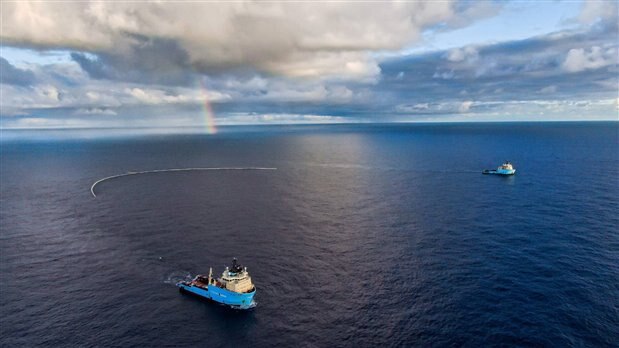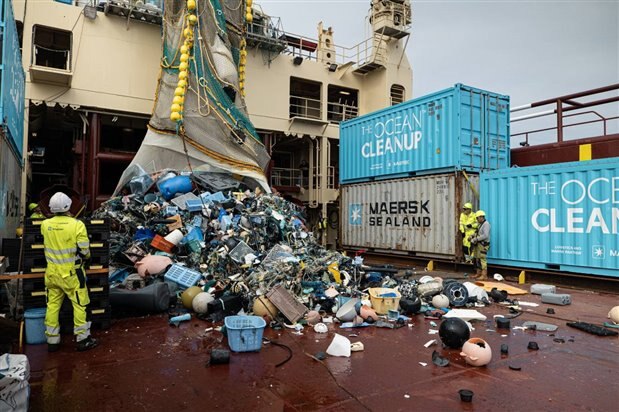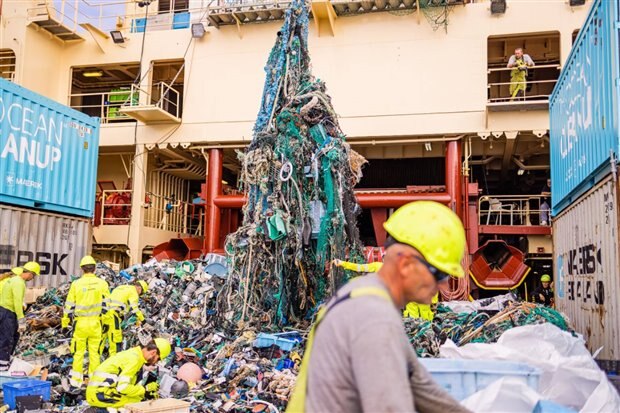Earlier, The Ocean Cleanup deployed Jenny in the Great Pacific Garbage Patch to determine if it could collect plastic without breaking. (Image Credit: The Ocean Cleanup)
How heartwarming...
Nearly a decade ago, Boyan Slat announced ambitions to remove plastic from the planet’s oceans. Now the founder of the Ocean Cleanup, Slat aims to remove 90% of the ocean’s plastic by 2040. Efforts began in 2018 when the first plastic-capturing device was launched. However, this prototype failed in the water. In 2019, the company launched a newer model, improving the plastic-collecting process, but it’s estimated that hundreds of these devices would be needed to clean the oceans.
Scientists and engineers were questioning if the organization could proceed with the tens of millions of dollars it secured in funding. Over the summer, the Ocean Cleanup developed Jenny, a new device that captures plastic in its fold, which is then funneled into a net. The device is towed by two vessels through the water at 1.5 knots. Then, the ocean current pushes garbage into the giant net. In early August, the team deployed Jenny in the Great Pacific Garbage Patch.
The device recently brought in 9.000 kilograms of trash from the Pacific Ocean without breaking, a feat that demonstrates its capabilities to clean up the oceans.
The collected garbage was dumped on one of the vessels towing the Jenny device. (Image Credit: The Ocean Cleanup)
Slat’s ocean-cleaning device has progressed since it was first unveiled as a 330-foot-long floating barrier resembling a long pipe in the water. The latest U-shaped version is more flexible, similar to pool lane dividers. According to Slat’s estimations, it could take approximately 10 Jennys to clean up 50% of the Great Pacific Garbage Patch in five years. He also tweeted that one device can carry 10,000 to 15,000 kilograms of plastic. After a few weeks, its attached net fills up with plastic, which is when the crew removes it from the water and dumps the garbage onto a vessel.
The garbage then gets recycled when it’s transported to shore. The Ocean Cleanup uses this plastic to produce $200 pairs of sunglasses, investing the proceeds into the cleanup efforts. Later on, the company wants to collaborate with consumer brands to create recycled products.
Ocean Cleanup’s system gathers all sorts of trash near the ocean surface, such as fishing nets, large containers, and microplastics measuring a few millimeters. However, the bottom of the ocean may have up to 30 times more plastic, according to a 2020 study. The organization says large plastic will break down into microplastics, which are more difficult to remove.
Unfortunately, a Jenny device doesn’t stop garbage from going into the oceans. Approximately 11 million metric tons of plastic find their way into the ocean annually. That number could increase to 29 million metric tons by 2040. Ten Jenny devices could capture 15,000 to 20,000 metric tons per year. However, this would take a toll on the environment since the vessels pulling each Jenny device rely on fuel to operate.
Jenny was designed to collect plastic via the ocean’s current, but this ultimately caused it to leak out most of the collected garbage. Now, the organization is purchasing carbon credits to compensate for the boat's emissions.
Have a story tip? Message me at: http://twitter.com/Cabe_Atwell



